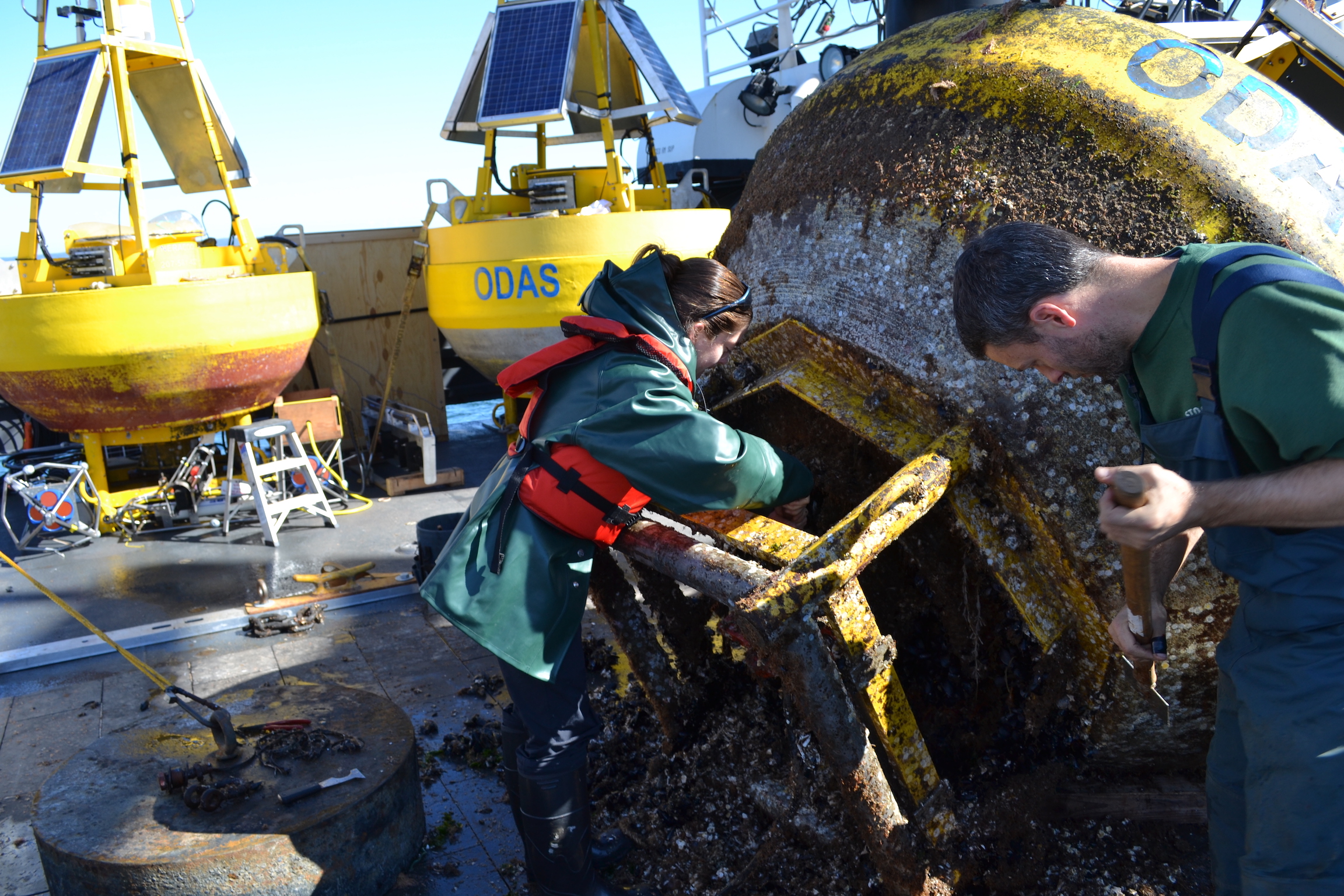Nina Whitney is currently assisting on a science vessel in the Gulf of Maine, USA. She is collecting valuable data for her PhD work. Below is a message from her first few days aboard the boat. Best of luck to Nina and the crew!
It is day 3 aboard the NOAA R/V Pisces and I’m finally feeling like I can look at a computer screen long enough to write a blog post without losing all of my lunch…so to speak!

The NOAA R/V Pisces in Newport, Rhode Island, ready for a Gulf of Maine adventure.
I snuck onto the Pisces through the immense generosity of Dr. Neal Pettigrew, a physical oceanographer at the University of Maine, who is the lead scientist on this cruise. The main purpose of our cruise is to recover, service and redeploy Gulf of Maine Observatory buoys that Neal’s physical oceanography group designs, builds and operates. These buoys are located throughout the Gulf of Maine and are part of NERACOOS (Northeast Regional Association of Coastal Ocean Observing Systems: http://www.neracoos.org/). The buoys contain numerous sensors on them that report real-time data on temperature, salinity, nutrients, currents etc. at the locations where they are deployed.
Fortunately for me, the boat is stopping periodically along its route to take CTD (Conductivity Temperature Depth) casts (the official name for when the CTD is lowered on a cable into the water down to a given depth, usually the ocean floor, and back up). These casts show us profiles of temperature, salinity, florescence, and other properties of the water with depth. The CTD also has 11 Niskin bottles attached to it which allow us to collect water samples at various depths throughout the profile. I am on the Pisces to collect water samples to aid in my research on reconstructing past hydrographic and oceanic dynamics in the Gulf of Maine using Arctica islandica shells. I’ll be analyzing these samples for oxygen and nitrogen isotopes once I get them back to Iowa, which will allow us to look at ocean mixing and salinity-oxygen isotope relationships within the Gulf of Maine.
We left Newport, RI midday Tuesday and headed north along the coast and into the Gulf of Maine via the Cape Cod Canal. We made our way around Cape Ann and into Wilkinson Basin, stopping at various points to take CTD casts. The ship operates 24 hours a day so the scientists who are collecting water samples are working on shifts – mine is 12:00-4:00 – AM and PM! We’ve done 11 casts so far, with our deepest cast being 280 meters deep in Wilkinson Basin! The deep casts are exciting for me as I’ve done some research on oxygen isotope signatures of surface waters in the Gulf of Maine but none at depth and we expect the denser waters that sit at the bottom of the basins in the Gulf of Maine to be very different compositionally.
Yesterday we deployed a Slocum glider, which is an autonomous vehicle that can change its buoyancy by changing its density and therefore move up and down in the water column while traveling throughout the Gulf of Maine, all controlled remotely by computer. It’ll be collected 3 weeks from now and will be measuring various water properties throughout its adventure. This was a stressful process for those involved as it is a very expensive and delicate instrument but all went well and it was sent on its way.
Early this morning we made it to Penobscot Bay, where we recovered Buoy F, which has been sitting here for the past year, collecting data. Our plan was to service it, replacing chain and sensors as well as cleaning it, and then redeploy it but due to several glitches, largely involving how the buoy talks to the computers and relays data, we had to postpone redeploying it until tomorrow morning. While I largely stayed out of the way of the engineers as they were working on the buoy, I did get to get down and dirty cleaning off the buoy from a year’s worth of sea life that had accumulated on it. Yum!

Nina and Neil Fischer scraping off Buoy F. Buoys I and M in the background, waiting for deployment. Photo by Maura Thomas.
That’s all for now from somewhere off the Maine coast. Hopefully we’ll get this buoy back in the water tomorrow morning and be on our way to Jordan Basin.

The Slocum glider being lowered on the life raft for deployment.
